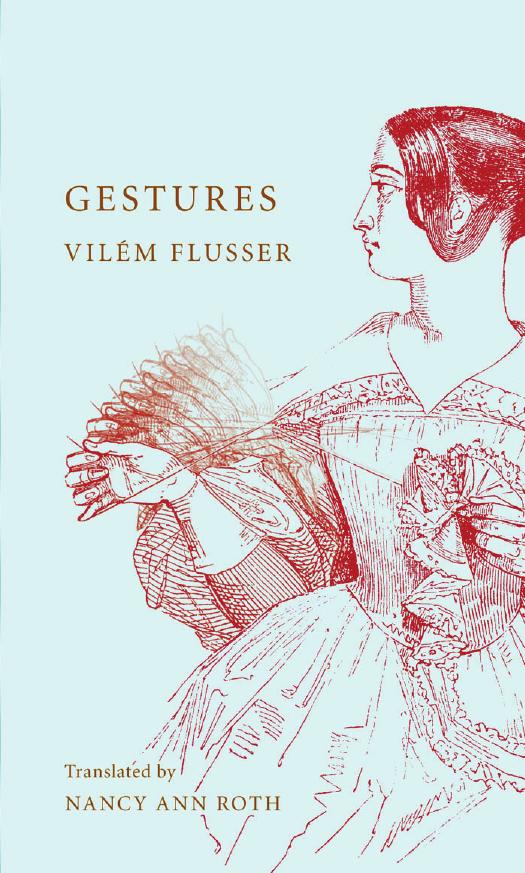Gestures by Flusser Vilém

Author:Flusser, Vilém [Flusser, Vilém]
Language: eng
Format: mobi, pdf
Tags: SOC052000 Social Science / Media Studies
ISBN: 9780816691289
Publisher: University of Minnesota Press
Published: 2014-05-31T16:00:00+00:00
The Gesture of Planting
Contrary to superficial first impressions, we are dealing here with an unnatural gesture, “perverse” in a radical sense: for in it, being turns into its opposite. This perversity, and the way the so-called ecological movement has inverted it, effectively demands that we consider this gesture just after having examined the gesture of turning a mask around. The thesis I want to advance here is that the ecologists’ standpoint is the same one as the one from which one turns a mask around: a standpoint outside history.
As with most of the gestures we encounter daily, there is no appropriate strategy for recognizing this gesture, for remembering it. For it is covered up by habit (although we city-dwellers hardly do any planting ourselves), and this familiarity blocks our memories’ access to the essential thing about the gesture. Another thing about planting is that it is laden with myths, allegories, and metaphors to a greater extent than other gestures are, so that familiarity is enveloped in “hyperfamiliarity,” hiding the essence of the gesture that much more effectively. So it is appropriate to try to enter into the conditions in which the gesture was new, to the situation of the Neolithic planter, not only because its contemporary novelty could reveal the essential thing about the gesture but also because this study’s thesis is that new gestures express a new form of being. There is hardly another critical point in history that could support this thesis as effectively as the emergence of the gesture of planting in the late Mesolithic.
In trying to think oneself into the situation in which a hunter-gatherer decides to dig holes in the ground, to press grass seeds into them, to close up the holes again and then wait for months to see what happens, one can hardly grasp the perversity of this gesture. To have this experience, one must obviously try to forget what later “normalized” this gesture, that is, all of history. The perversity, the turning of existence into its opposite, can only be experienced by observing the gesture in its original context, by bracketing out all economic, social, and political explanations, by observing the gesture not from the twentieth-century point of view but from that of the Paleolithic. This is possible because a posthistorical standpoint, or more exactly, one of its aspects—the ecological standpoint—has now become accessible.
The hunter-gatherer, as we encounter him in perhaps a decadent form in the Amazon region, and perhaps in a depressed form within ourselves, is a setter of traps, a “capturer.” He builds structures for containing ponies, reindeer, or primeval beasts and baskets for catching berries, roots, or eggs. Looking at this basic gesture more closely, it becomes clear that it is about weaving nets, for traps and baskets can be seen as stitches in a net that people cast about themselves. All other gestures of work, the making of weapons as much as the sharpening of flints, of painting as well as burying, can be understood as variations of net weaving, that is, hunting and gathering.
Download
This site does not store any files on its server. We only index and link to content provided by other sites. Please contact the content providers to delete copyright contents if any and email us, we'll remove relevant links or contents immediately.
| Deconstruction | Existentialism |
| Humanism | Phenomenology |
| Pragmatism | Rationalism |
| Structuralism | Transcendentalism |
| Utilitarianism |
The remains of the day by Kazuo Ishiguro(8893)
Tools of Titans by Timothy Ferriss(8305)
Giovanni's Room by James Baldwin(7254)
The Black Swan by Nassim Nicholas Taleb(7058)
Inner Engineering: A Yogi's Guide to Joy by Sadhguru(6752)
The Way of Zen by Alan W. Watts(6555)
Asking the Right Questions: A Guide to Critical Thinking by M. Neil Browne & Stuart M. Keeley(5709)
The Power of Now: A Guide to Spiritual Enlightenment by Eckhart Tolle(5680)
The Six Wives Of Henry VIII (WOMEN IN HISTORY) by Fraser Antonia(5456)
Astrophysics for People in a Hurry by Neil DeGrasse Tyson(5151)
Housekeeping by Marilynne Robinson(4395)
12 Rules for Life by Jordan B. Peterson(4276)
Double Down (Diary of a Wimpy Kid Book 11) by Jeff Kinney(4242)
The Ethical Slut by Janet W. Hardy(4215)
Skin in the Game by Nassim Nicholas Taleb(4205)
Ikigai by Héctor García & Francesc Miralles(4173)
The Art of Happiness by The Dalai Lama(4092)
Skin in the Game: Hidden Asymmetries in Daily Life by Nassim Nicholas Taleb(3962)
Walking by Henry David Thoreau(3923)
